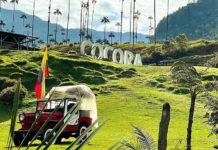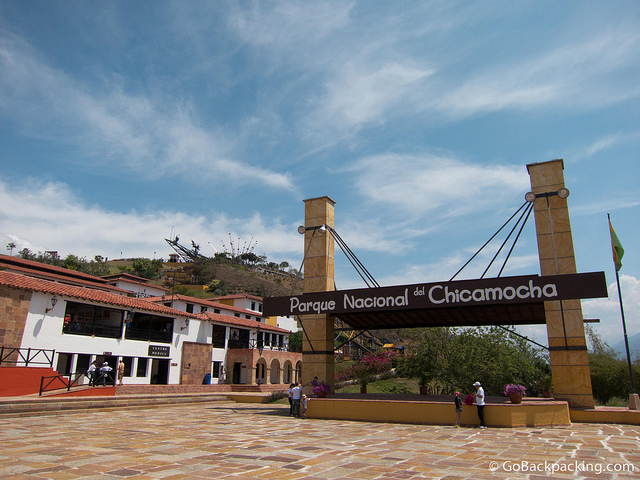
Parque Nacional del Chicamocha (also known as Panachi) is a park situated along a mountain ridge cutting through the Chicamocha Canyon.
My first attempt to visit Parque Chicamocha, which only opened in 2006, from Bucaramanga failed when I made it halfway there by bus, only to learn the teleferico, or cable car, was closed for maintenance.
As that was the #1 thing I wanted to do there, I decided to try again from San Gil a few days later.
In the meantime, I discovered the park’s website has a calendar of scheduled maintenance days for the teleferico. Doh!
The route from Bucaramanga to San Gil takes you past the park’s entrance, allowing you similar views to what you’ll see when you visit the park.
In the interest of time, some travelers may prefer to get off the van at the park, and visit along the way to San Gil (or Bucaramanga if coming from San Gil).
I decided to make it a separate visit, and was glad I did, because I spent 3-4 hours there, including a delicious lunch.
The colectivo from San Gil cost $4.50, and takes about an hour. It’s not as nauseating a ride as it is from Bucaramanga, which is why I recommend visiting the park from San Gil instead.
Admission, including a roundtrip ride on the teleferico, cost me $22. To visit the park alone costs 15,000 pesos, or $8.
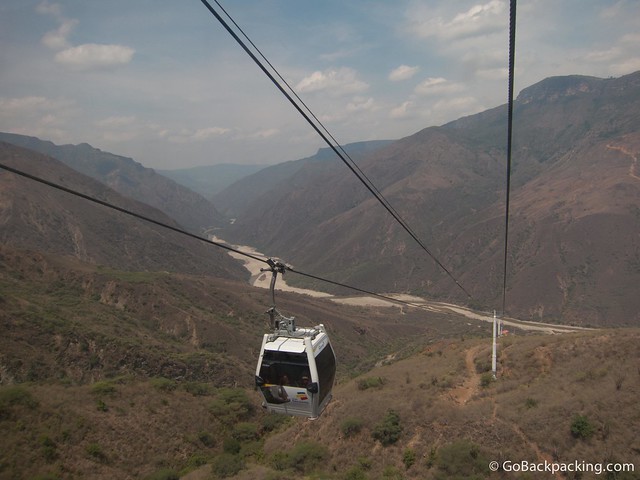
Speaking of the teleferico, it’s the first thing I did once I entered the park.
As I was descending into the valley, I couldn’t see the poles on the other side of the mountain, so I was thinking the ride ended at the river below.
I was wrong. It wouldn’t be one of the world’s longest aerial trams if it didn’t go back up the mountain on the opposite side, to what’s known as “Mesa de los Santos” (Saint’s Table).
It was on the cable car ride, which lasts about 20 minutes each way, that I got a real feel for the grandeur of the Chicamocha Canyon.
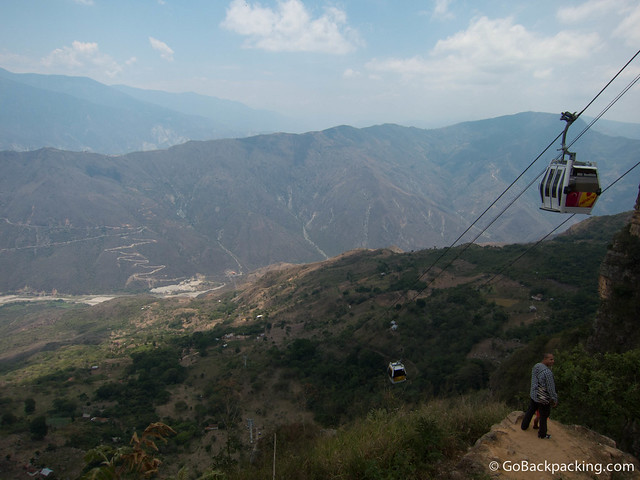
The other side has a mock pueblo filled with souvenir shops and cafes.
There’s not a lot to do there, but I did eat an oblea, a sweet snack of tortilla-like wafers with arequipe (or other fillings) sandwiched in between.
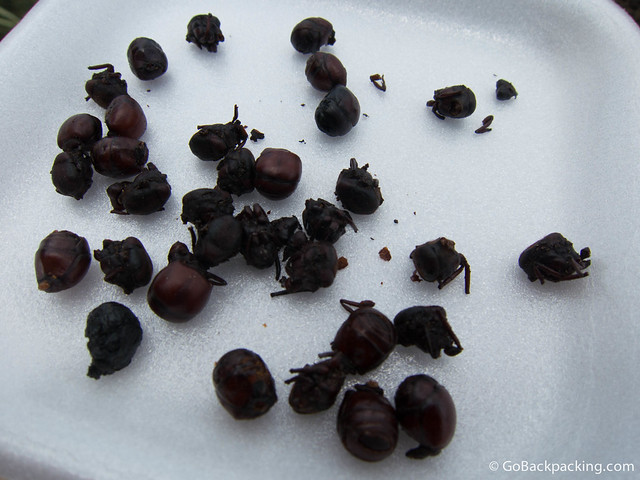
Less tasty were the hormigas culonas (literally translated as “big ass ants”), which are a local delicacy in Santander.
I bought a little bag of the dried ants, or their asses mostly, since you don’t eat the heads.
Some people claim they taste like popcorn, but I thought they tasted like dried ants.
Crunchy, and not too flavorful.
Later, I learned the ants are collected during the rainy season which had yet to begin this year. The person joked that I was eating leftover ants from 2012. Yuck!

After my ant-eating experience, I took the teleferico back to Parque del Chicamocha to see what else it had to offer.
Passing shops and restaurants, I wandered up the pathways toward a large sculpture with a prominent profile.
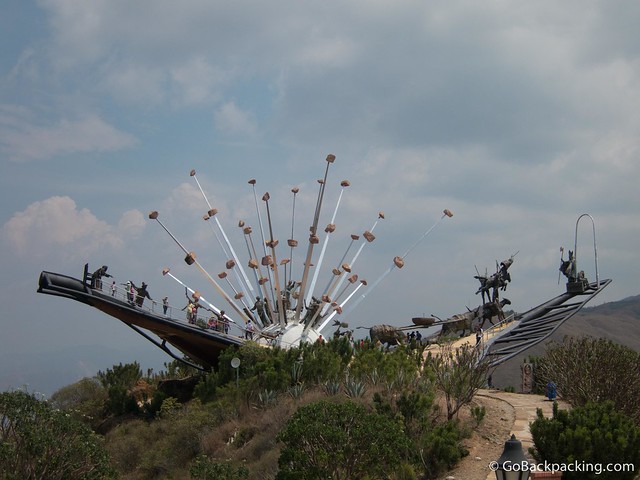
A monument to Santanderan culture, the sculpture is a monumental piece of art.
Between its position on the ridge, offerring 360-degree views, and the life-size figures telling the story of rebellion, I found it to be a highlight of the park.

A recording in the center of the sculpture explains its meaning in both English and Spanish, if you can handle being exposed to the sun for that long.
I couldn’t.
Like most of the others, I snapped photos, and continued onward.
Underneath the sculpture is a cafe, offering shade, refreshments and food for those needing a break.
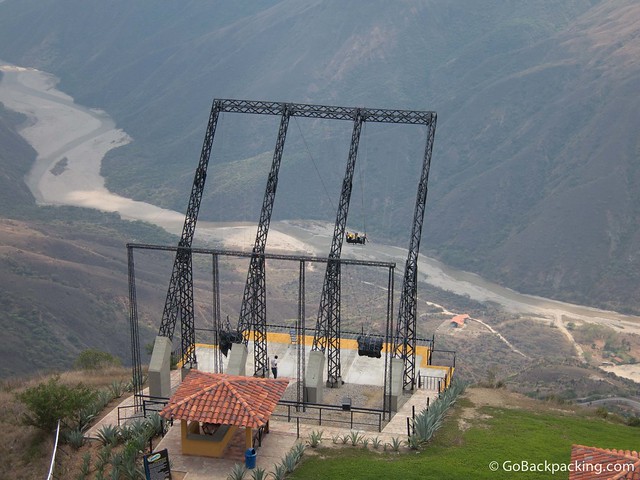
The park features several amusement park style rides, including a giant canyon swing that ejects people out over the edge of the canyon, a zipline, go karts, and a petting zoo with ostriches and goats (the park’s mascot).
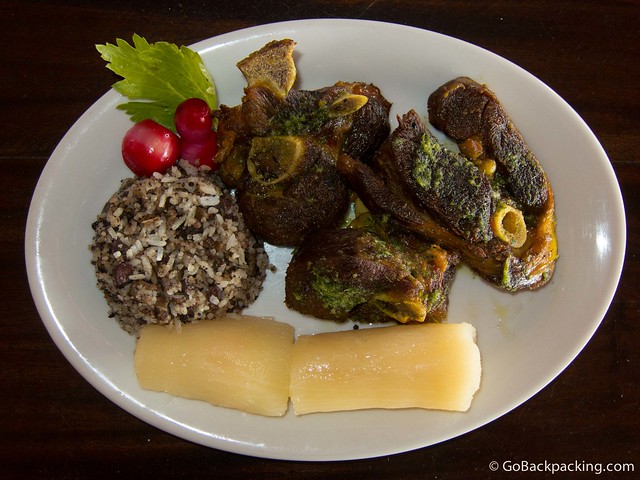
Speaking of goats, I decided to give the animal another shot. I’ve had goat a handful of times, including in Cabo de la Vela, but it has never tasted good.
Seeing as how it was the park’s symbol, and a regional specialty, I took a chance on ordering it again at one of the restaurants.
A healthy portion of goat arrived, on the bone, smothered in a green sauce of local Chicamocha herbs, accompanied by yuca, wild rice, and red onions.
This time, the goat was excellent. The meat was tender and juicy, and easy to pull off the bone. Along with a drink, it cost me $13, but you can find cheaper eats at the snack shops if so inclined.
After lunch, I went back to the park entrance, and asked about transport to San Gil.
One of the park employees called a bus company, alerting them to stop and pick me. The wait wasn’t more than 10 minutes.
I had my doubts about whether Parque Nacional del Chicamocha would be worth the effort, but it turned out to be a fun excursion, I’d recommend to anyone passing through Bucaramanga or San Gil.
Have you been to Chicamocha Canyon? Share your thoughts in the Comments below.



